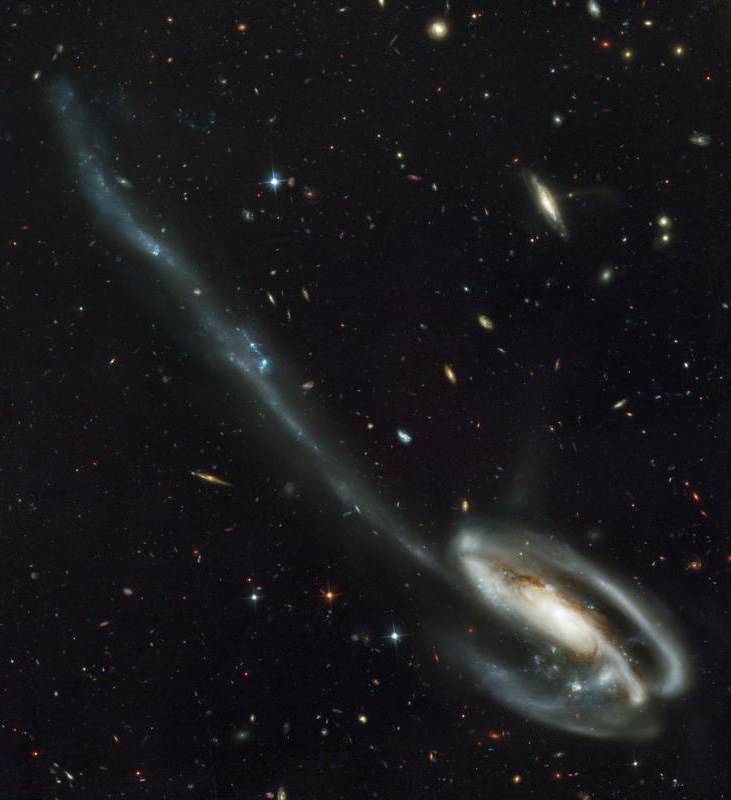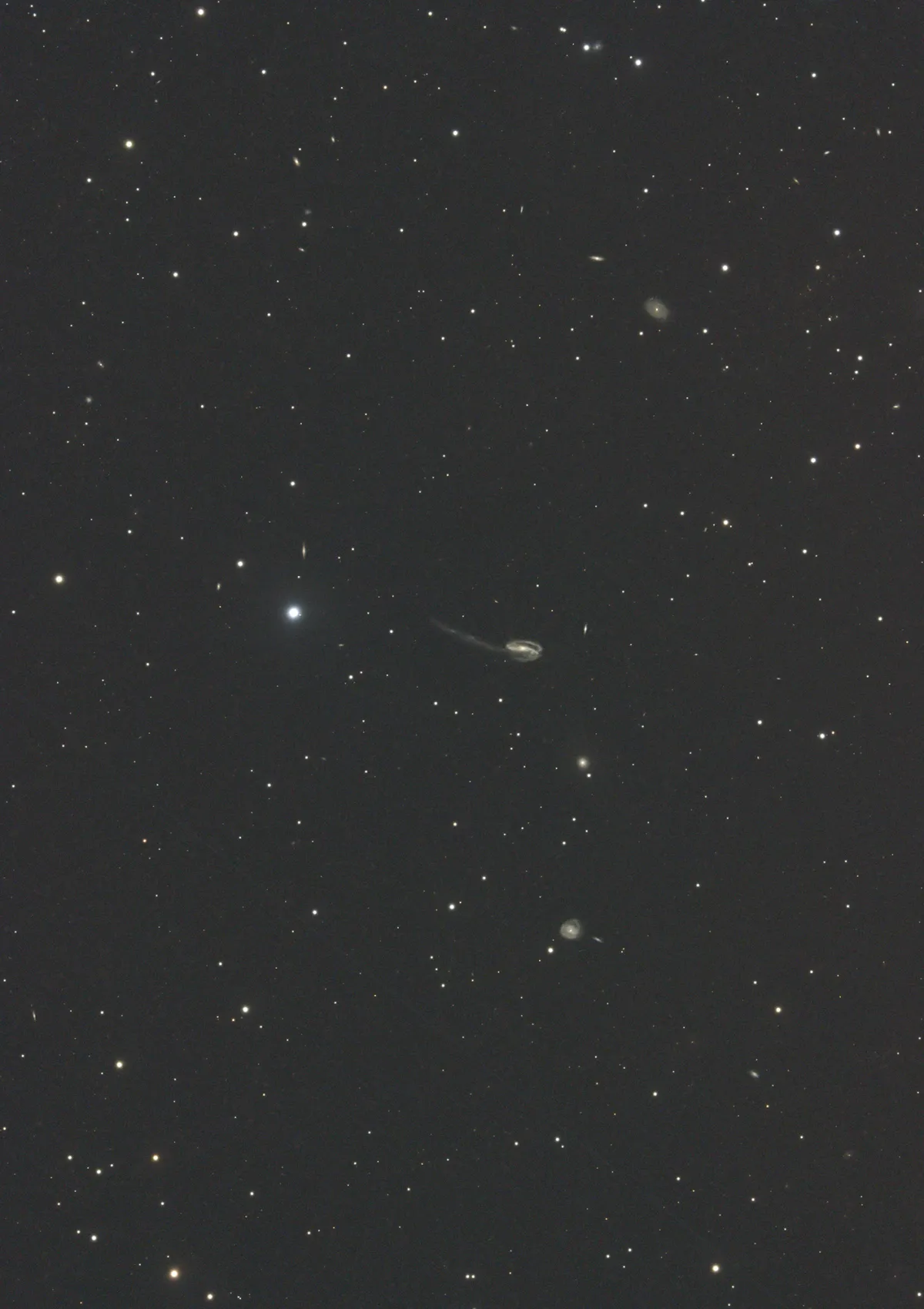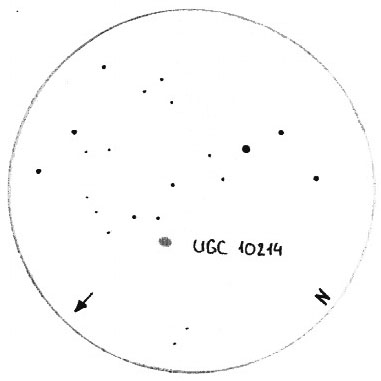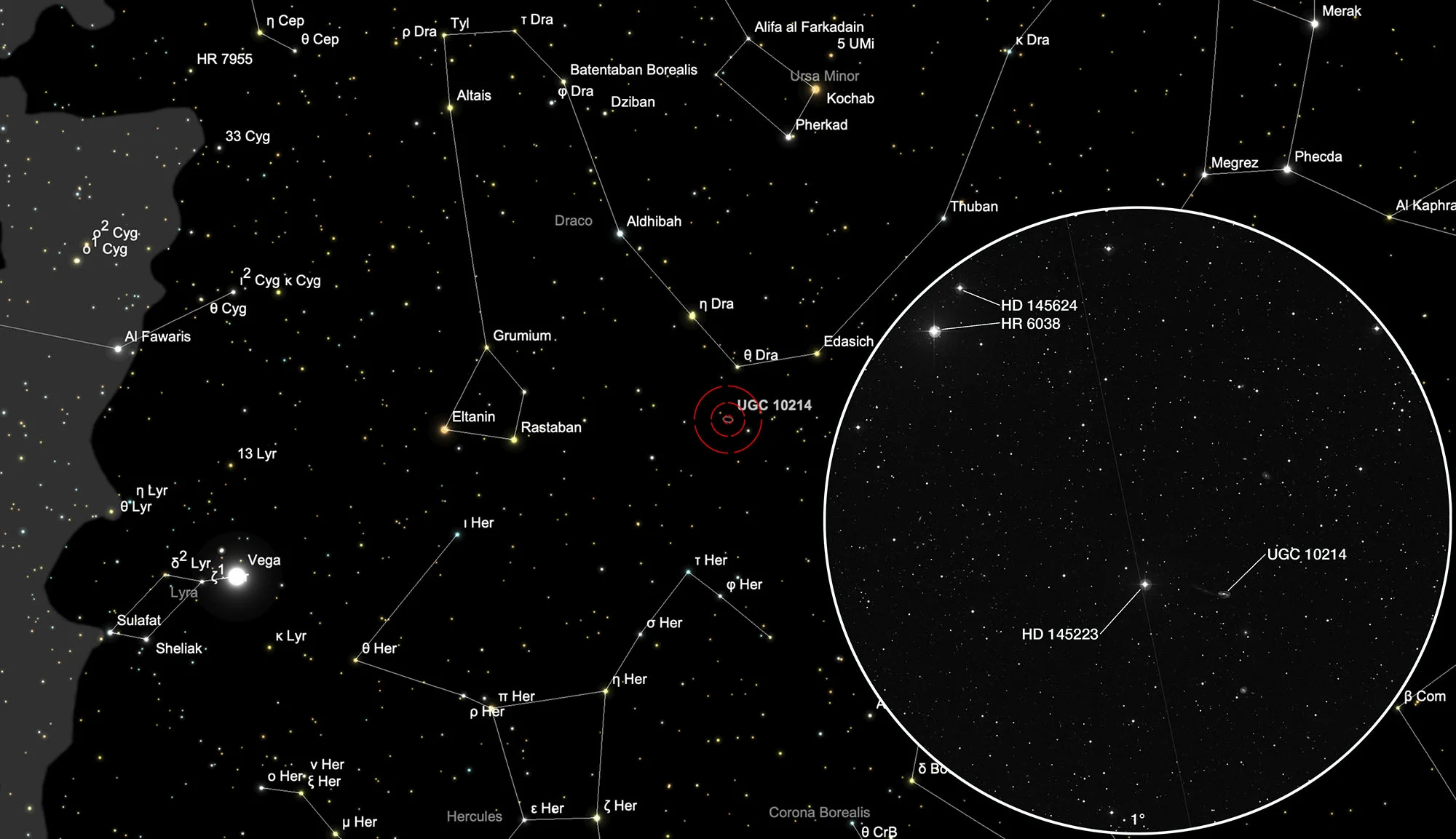Tadpole Galaxy (UGC 10214)


History
The galaxy was most probably found in the 1950's by the Russian astronomer Boris Aleksandrovich Vorontsov-Velyaminov on the photo platers of the «Palomar Observatory Sky Survey». He listed it as VV 29 in his «Atlas and Catalogue of Interacting Galaxies», which was published in 1959. [432]. In Halton Arp's «Atlas of Peculiar Galaxies» from 1966 the galaxy is listed as Arp 188 as a galaxy with narrow filaments. He noted: «Disturbance inside W arm, filament may originate there.» [199]
This galaxy became famous through a photograph taken in 2002 by the Hubble Space Telescope (Fig. 1). The nickname «Tadpole» is understandable if you take a closer look at their shape.
Physical Properties
The Tadpole galaxy is moving away from us at a speed of 9217 km/s, which suggests a distance of 420 million light years. The mass is estimated at 1.28×1011 solar masses. The tail is estimated to be 280'000 light-years long. This is believed to have been caused by a collision with a smaller galaxy around 100 million years ago. There are tons of blue stars in the galaxy. [145]
| Designations | PGC 57129: UGC 10214, MCG 9-26-56, CGCG 275-23, VV 29, ARP 188, ANON 1605+55 |
| Right Ascension (J2000.0) | 16h 06m 08.4s |
| Declination (J2000.0) | +55° 25' 00" |
| Morphological Type | SB M |
| Dimensions | 3.6' x .8' |
| Visual Magnitude | 14.6 mag |
| Position Angle | 4° |
Finder Chart
Located in the constellation of Draco, the Tadpole Galaxy is circumpolar for us and is highest in the night sky during the months of January to October. On 25 May it is in opposition to the Sun and culminates at local midnight. Use the Telrad finder chart below to find the right star field. The detailed map, which indicates a 1° eyepiece section, is used to verify the correct surrounding stars. Once these have been found, the galaxy will also reveal itself. [192]
Visual Observation

320 mm aperture: For observing, the galaxy UGC 10214 places high demands on the sky and the telescope. The sky must be extremely transparent, cirrus clouds are absolutely passé. The telescope should have an aperture of over 300 mm for easy access to the galaxy. The Tadpole galaxy is then already visible with averted vision. Yes, it can even be seen directly at times - provided the sky is transparent. — 12.5" Ninja-Dobson, F:4.5 / TV-Nagler 13mm, 111x, 0.74° und TV-Radian 8mm, 181x, 0.33°, Eduard von Bergen
